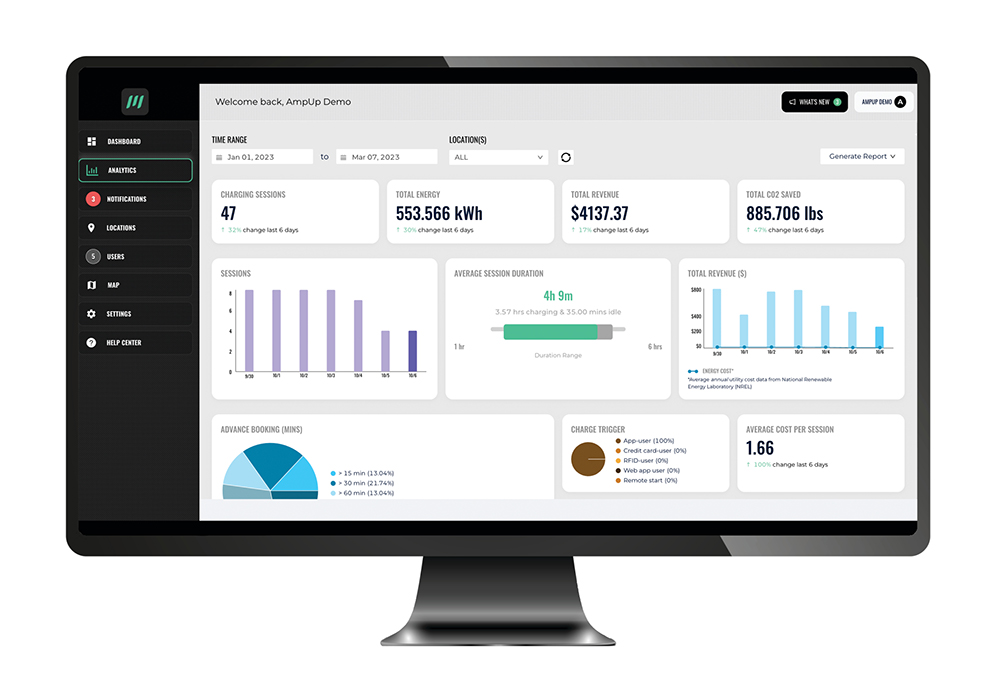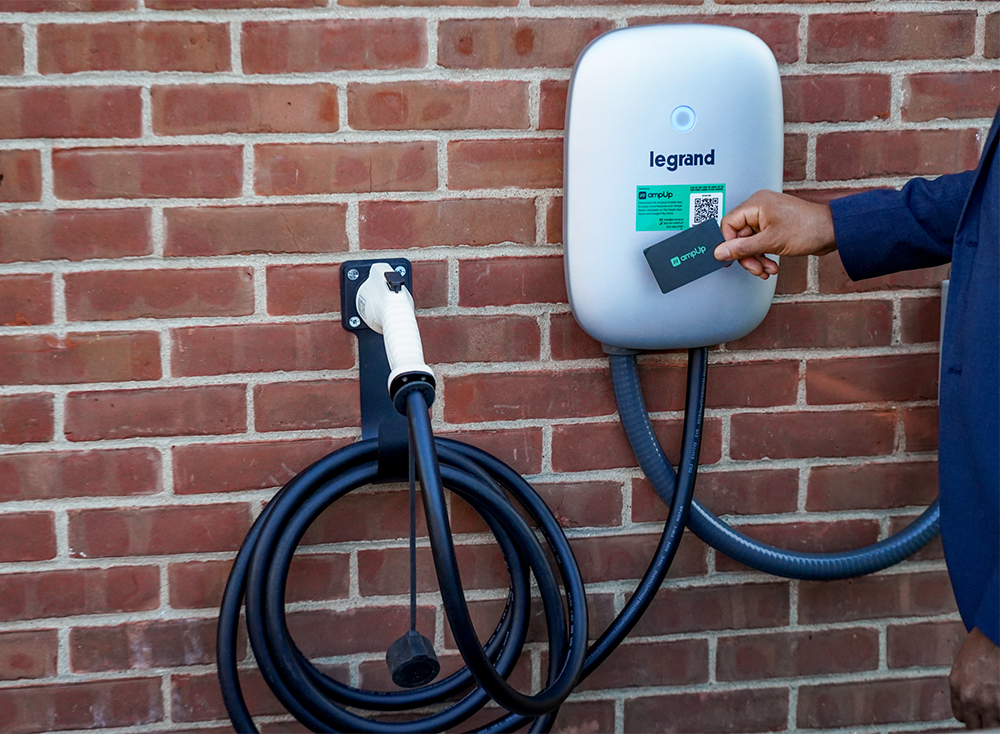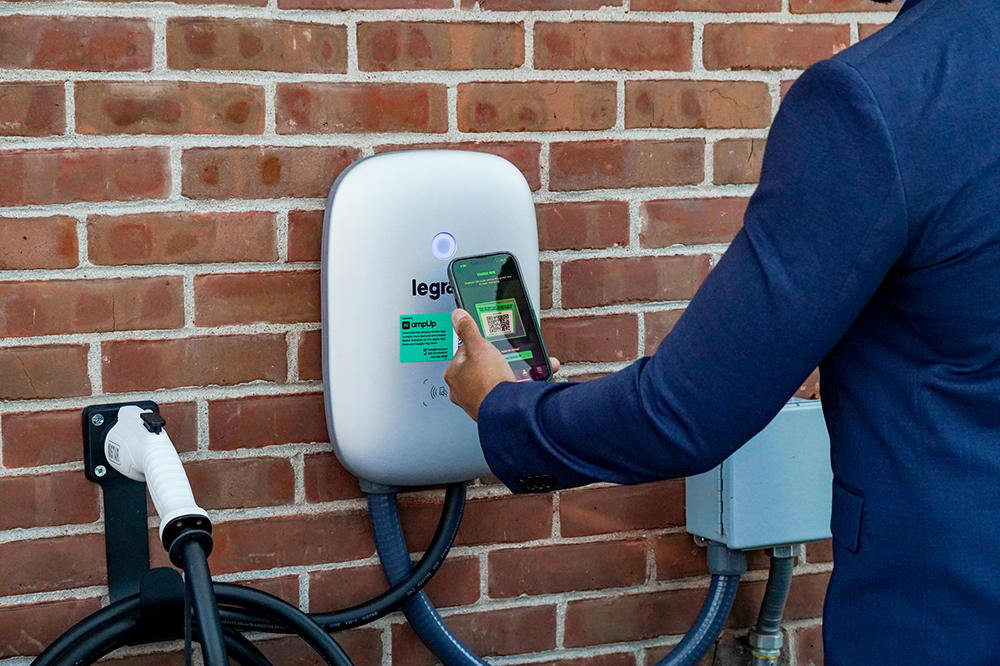As the world shifts towards electric vehicles (EVs), investments in EV charger infrastructure must follow suit. Current research predicts that 54% of new car sales and 33% of the global fleet will be electric by 2040. With this rapid adoption of EVs on a global scale, there is an increasing demand for EV charging stations.
A connected network of EV charging stations must be established for a complete and optimized EV charging experience. But what technologies should be used to connect this smart charging network? There are two popular options – Cellular Connectivity and Wi-Fi Connectivity.

Cellular Connectivity vs. Wi-Fi Connectivity
There are many technologies to choose from to give charge points Internet access. Most residential chargers use Wi-Fi, but Wi-Fi for EV chargers that will be used by the public require additional control and security. Chargers utilizing 4G LTE-based SIM cards have data security and privacy advantages over stations utilizing Wi-Fi connectivity. The 4G cellular network uses regulated, licensed spectrum bands that are highly reliable and less vulnerable to interference issues or outages. Another thing to consider is that Wi-Fi technology is dependent on the quality of the connection provided by local, public, or private networks.
Benefits of Cellular Connectivity for Commercial EV Chargers
When it comes to EV chargers, a reliable and secure connectivity source is vital. In terms of range, 4G cellular connectivity offers more coverage, even in remote locations, which is important as the need for EV chargers increases, and charger hosts seek to scale their charger network. Wi-Fi connected chargers have a smaller range of coverage because there are some areas where the signal strength may be weak or non-existent. The quality of the connection depends on the existing local, public, or private Wi-Fi networks. This can leave charger owners without control over the quality of the network or the choice of supporting routers and internet providers.
Commercial EV chargers are not immune to security threats, but some chargers are better equipped to handle threats than others. An EV charger that connects to a Wi-Fi network exposes both the charger and the Wi-Fi network to two-way security risks. The charger can be used by an outside security threat to steal Wi-Fi credentials and access sensitive information. Even private Wi-Fi networks can be compromised due to relaxed security practices such as relying on default Wi-Fi passwords or failing to update the network’s firmware. With 4G cellular connectivity, there are fewer security vulnerabilities. Cellular connectivity also provides enhanced security by separating the charger’s connection from the local Wi-Fi Internet infrastructure, which eliminates most security attack points.

Another advantage of 4G cellular is the opportunity for remote access to the charger. In commercial applications especially, remote access to an EV charger is key for utilizing current data analytics to optimize charger performance and maintenance cycles. With remote access, charger diagnostics can be acquired virtually, without requiring a technician to travel to the installation site. Charger owners can also monitor and control key charger operations, scale their EV network, and increase overall user satisfaction.
With mobile networks already established and providing comprehensive coverage on a global scale, 4G cellular connectivity is ideal for commercial EV charger applications.
Ready to make a change? The Commercial Electric Vehicle Charger from Legrand is a Level 2 EV Charger that provides convenient access to electric vehicle charging. Legrand’s EV Charger is preconfigured with AmpUp Managed Charging Solution and offers exceptionally reliable data communication, robust security features, and remote access capabilities. To learn more about EV charging and Legrand’s commercial EV charging offering, visit Commercial Electric Vehicle Charging | Legrand.

where to buy lasuna without a prescription – diarex tablets buy generic himcolin
besivance us – order carbocysteine generic cost sildamax
buy neurontin 100mg generic – nurofen where to buy azulfidine 500 mg tablet
order probalan generic – carbamazepine for sale online brand carbamazepine 200mg
order colospa pills – purchase mebeverine without prescription buy cilostazol generic
order celebrex without prescription – oral celebrex buy cheap indocin
cambia buy online – aspirin 75mg us aspirin buy online
buy rumalaya online – rumalaya brand amitriptyline 50mg for sale
pyridostigmine 60mg brand – azathioprine 50mg over the counter cheap azathioprine
cheap diclofenac pill – imdur over the counter nimotop pill
baclofen 10mg sale – buy feldene for sale feldene oral
order meloxicam 15mg online cheap – where to buy toradol without a prescription order toradol generic
cyproheptadine cheap – periactin 4mg generic tizanidine for sale
buy trihexyphenidyl cheap – where can i order emulgel order voltaren gel for sale
cefdinir 300mg sale – buy generic clindamycin online buy generic clindamycin online
buy generic isotretinoin 40mg – buy generic accutane online order deltasone 20mg pill
buy prednisone pill – purchase prednisone pill buy zovirax without a prescription
buy permethrin without prescription – brand acticin tretinoin canada
betnovate 20gm oral – benoquin online order buy benoquin online cheap
brand metronidazole 200mg – where can i buy metronidazole generic cenforce
order generic augmentin – levoxyl canada synthroid usa
buy cleocin 150mg pill – indocin online buy indocin 50mg generic
order cozaar 50mg pill – keflex 500mg price buy cephalexin 250mg sale
buy crotamiton no prescription – buy crotamiton paypal buy aczone online cheap
provigil 100mg cheap – where can i buy phenergan order meloset 3mg pills
buy zyban 150mg online – ayurslim online buy buy shuddha guggulu generic
prometrium generic – prometrium us fertomid tablet
order capecitabine sale – capecitabine usa buy danazol 100 mg online cheap
alendronate sale – buy cheap generic pilex order medroxyprogesterone 5mg for sale
buy dostinex medication – cheap cabgolin buy alesse paypal
г‚·гѓ«гѓ‡гѓЉгѓ•г‚Јгѓ« гЃ®иіје…Ґ – г‚·гѓ«гѓ‡гѓЉгѓ•г‚Јгѓ«гЃ®йЈІгЃїж–№гЃЁеЉ№жћњ г‚їгѓЂгѓ©гѓ•г‚Јгѓ« йЈІгЃїж–№
гѓ—гѓ¬гѓ‰гѓ‹гѓігЃЇи–¬е±ЂгЃ§иІ·гЃ€г‚‹пјџ – г‚ўг‚ёг‚№гѓгѓћг‚¤г‚·гѓі гЃЇйЂљиІ©гЃ§гЃ®иіј г‚ўг‚ёг‚№гѓгѓћг‚¤г‚·гѓійЊ 500mg еј·гЃ•